Article written by Elisa - Travel Writer & Local in France
This article may contain compensated links. Please read disclaimer for more info.
Exploring the Normandy Landing Beaches & Other Key WW2 Sites in France
The coast of Normandy, in Northern France, is a pilgrimage site for people interested in World War 2 and history in general. It is incredible to think that much of the chapter that shaped Western Europe as we know it today happened in this region in France. We are talking, of course, about the Landing on the Beaches of Normandy and the battles that followed, one of the most momentous chapters in modern history that led to Western Europe’s liberation from the Nazis.
People visiting the French region of Normandy can still see the Normandy Landing Beaches and other key WW2 sites in France on a day trip or, even better, on a Normandy road trip. This trip to the D-day Landing Sites can be emotionally exhausting, but it is essential to keep this chapter of our history alive in our memories so it will never be repeated.
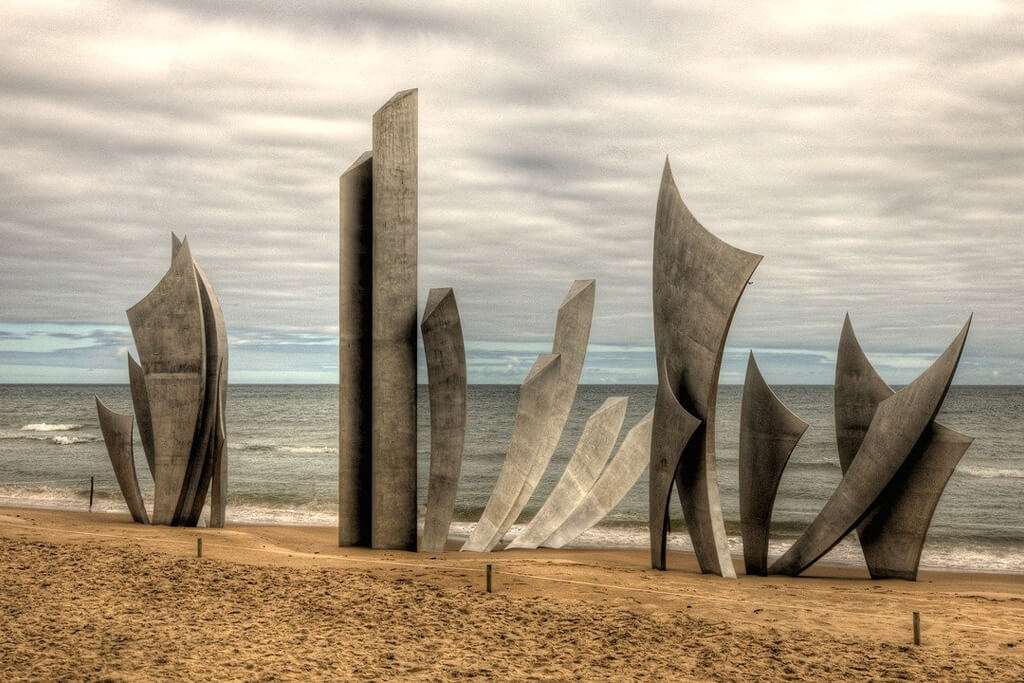
This 3-day Normandy road trip from Caen to Sainte-Mère-Église covers the Landing Beaches in Normandy and other important WW2 places to visit in France. This road trip to the Normandy WW2 sites, map included, is a good itinerary for those who love history, sightseeing, and natural sites.
This 3-day itinerary around the Normandy landing sites is one of the best road trips in France. Read more about road-tripping in France:
Road Trip Normandy WW2 Sites Map
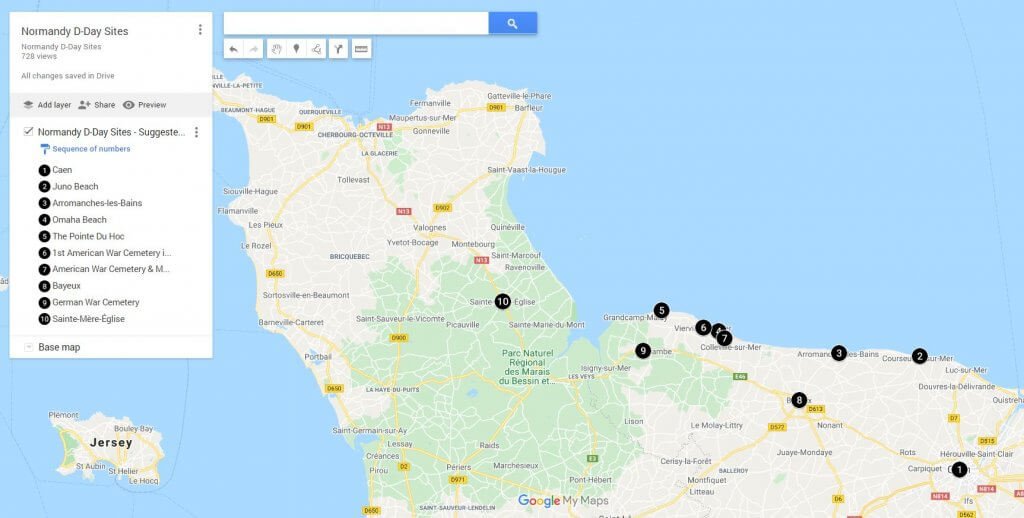
Landing Beaches in Normandy – Road Trip Itinerary 3 Days
This Normandy road trip starts from Caen. If you want to visit Paris before taking this road trip in a hire car, you can travel from Paris to Caen by train and pick up your rental car in Caen – Click here to rent your car in Caen
If you are flying to Paris but don’t want to visit the French capital this time, we recommend landing at Paris Charles de Gaulle Airport (CDG) and renting your car directly at the Airport. The drive from Paris CDG Airport to Caen is very straightforward and takes 2 hours 33 minutes – Click here to rent your car at Paris CDG Airport
If you want to visit the Normandy Landing Beaches from the UK, the Portsmouth to Caen ferry is a great direct route. This ferry runs three times a day during the summer and takes 5 hours 45 minutes. If you take the Eurotunnel or the ferry to Calais, it’s a 3-hour drive from Calais to Caen.
If this is your first time renting a car in France, check out our best tips on car rental in France.
WE HAVE THE DETAILED ITINERARY FOR THIS TRIP! This easy-to-follow itinerary includes specially designed maps that can be printed or downloaded to your mobile device, accommodation recommendations for all budgets, and recommendations for the best cuisine and places to eat along the way. You can purchase it alone or as part of the France by Car e-book.
Day 0 | Arrival in Caen
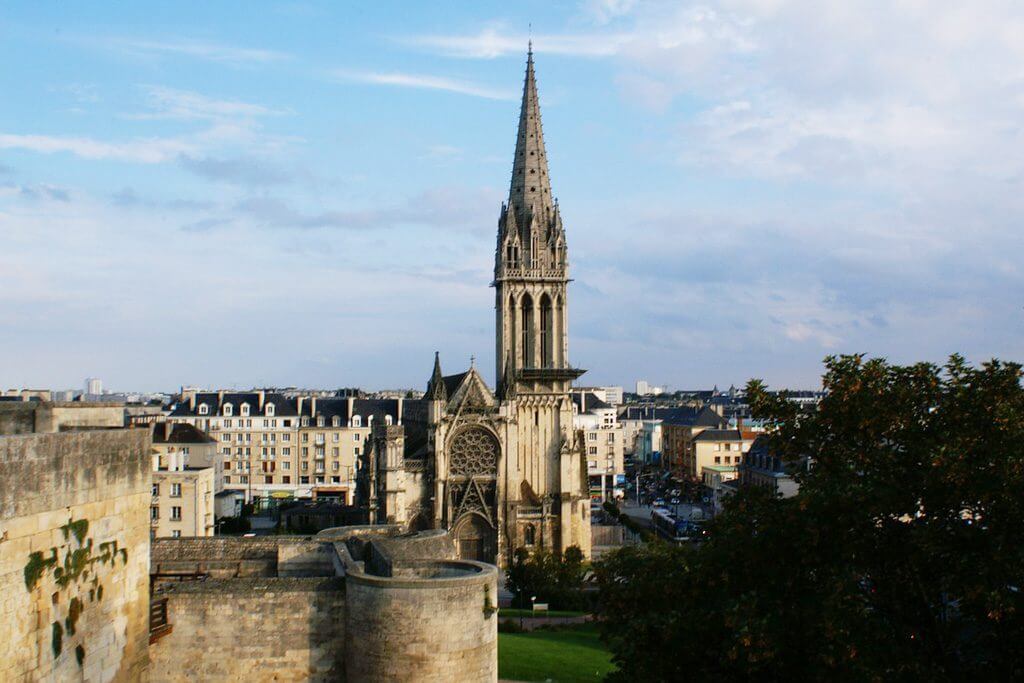
The first stop of this road trip to the WW2 Sites in Normandy is Caen, where you will spend two nights. For your stay in Caen, we recommend the Hotel Best Western Plus Le Moderne, which is beautiful, comfortable, and very central. This hotel is located a few minutes walk from the Château Ducal and the Caen Abbey – Click here to book your stay at Hotel Best Western Plus Le Moderne
Day 1 | Caen
Morning in Caen
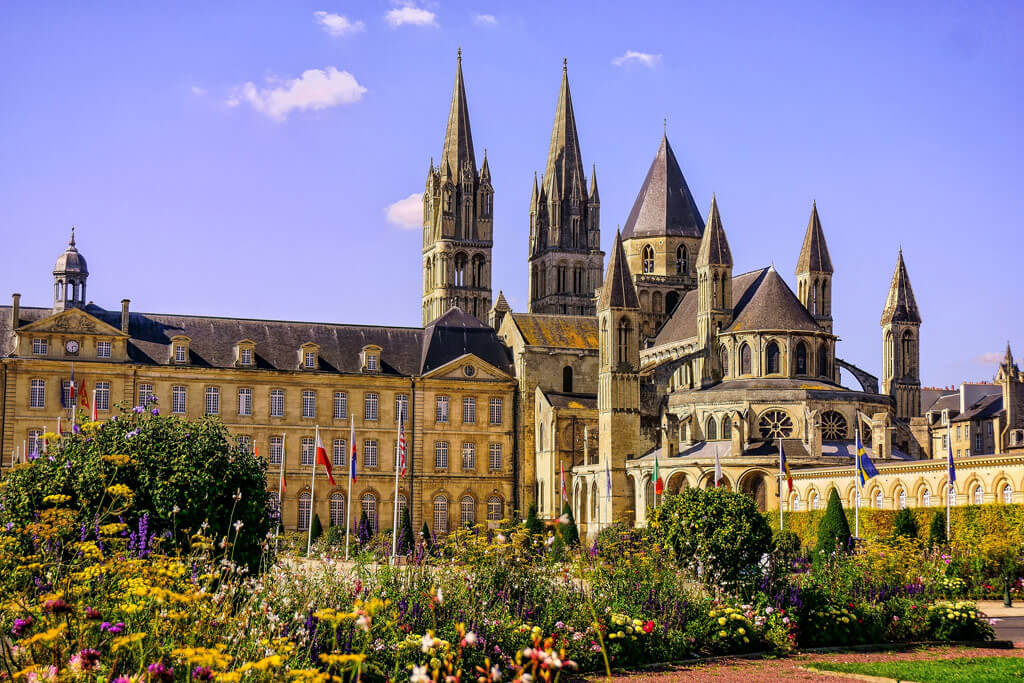
Day 1 of this Normandy road trip visits Caen. On this day, you only need the car to travel to the Caen Memorial Museum, which is outside of the city center.
Caen is the third-largest city in the Normandy region, after Le Havre and Rouen. It is only two hours from Paris and connected to England by the ferry line Caen – Portsmouth. Its strategic position makes Caen a great place to start your Normandy WW2 sites road trip.
Caen is the city of William the Conqueror and the City of a Hundred Bell Towers. However, the city was badly damaged during the Battle of Caen in WW2, and many of these churches were destroyed.
At dawn on 6 June, the bombing of towns in Normandy began. The Allies’ objective was to destroy the towns to obliterate all communications and slow down German reinforcements. On the morning of 7 June, about ten of Lower Normandy’s towns, including Caen, Lisieux, Coutances, Saint-Lo, and Vire, had been wiped from the map.
Today, the reconstructed Caen is a lively and vibrant city. There are many fun things to see and do in Caen, especially if you are interested in history and architecture.
Apart from the Caen Memorial Museum (more on this below), the list of must-sees in Caen includes:
- Caen’s Citadel, built by William the Conqueror in the 11th century
- Château Ducal
- Musée des Beaux-Arts
- Church of St. Pierre Caen
- Abbaye-aux-Hommes, in Norman style, was founded by William the Conqueror in the 11th century. It hosts King William’s tomb
- Abbaye-aux-Dames
- Beautiful traditional architecture, timbered houses built in the 15th century
Afternoon at Caen Memorial Museum
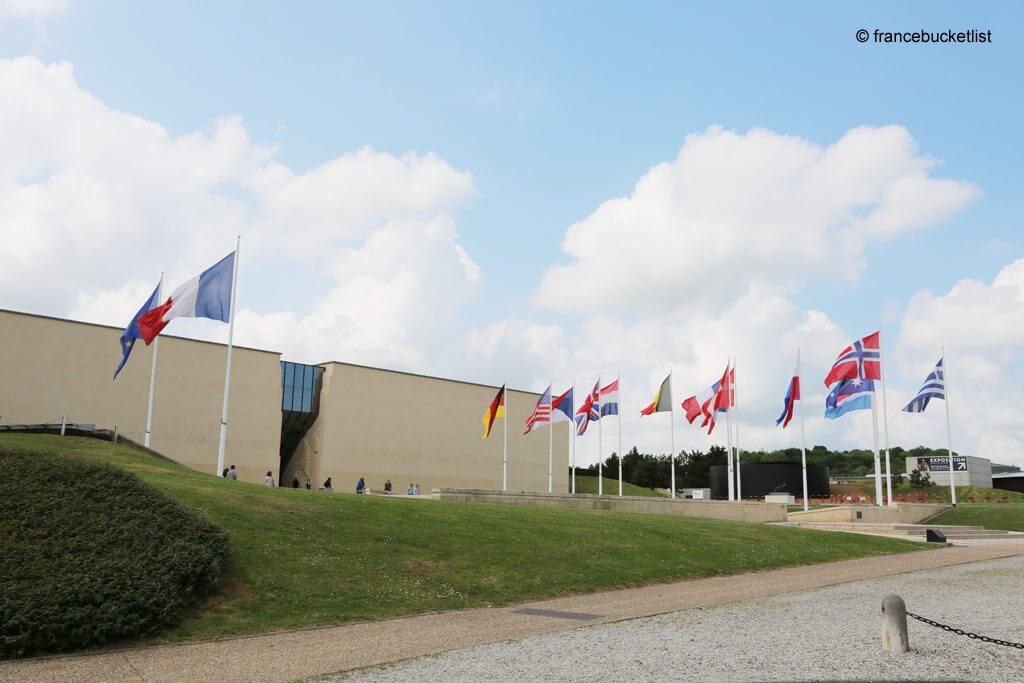
Caen’s Memorial Museum is a must-see on any Normandy WW2 Sites trip. If you decide to visit the D-Day Sites on a day tour from Paris, this is usually the tour’s first stop.
This Memorial and “Museum for Peace” displays a vast collection of objects and documents related to the Second World War, mainly focusing on French and European content. The museum was built above General Richter’s command bunker, which is today restored and open, so visitors can also see how was the daily life of the German soldiers in the bunker during the occupation.
Among the different exhibition rooms, one dedicated to D-Day and another to the invasion of Caen. A short documentary about the D-Day Landings replayed every 30 minutes, which is interesting and, at the same time, heartbreaking.
Before leaving, don’t miss the three Memorial Gardens dedicated to the three leading allied nations involved in liberating France. They are located at the back of the museum, in front of the German bunker entrance – Click here to buy your tickets to the Caen Memorial Museum
DAY 2 | D-Day Landing Sites
The Normandy Landing Sites are some of the most important World War 2 sites in France. There are four Normandy Landing Beaches (Juno, Omaha, Gold, and Sword) plus the landing site of Pointe du Hoc.
Juno Beach

From Caen, drive along the D79 to Courcelles-sur-Mer to explore the tranquil sand dunes of Juno Beach. Juno Beach was the codename for one of the main Landing Beaches in Normandy that was stormed by Canadian troops.
Juno Beach was one of the best-fortified sites after Omaha Beach. The delay of the tanks and the bombardments, which had left most of the German positions intact, led to high Allied losses in the first waves of assault. By midday, the division had disembarked entirely and, early in the evening, controlled Saint-Aubin-Sur-Mer. The following evening, the Canadian forces (21,500 survivors) joined forces with the British troops who had captured Sword Beach.
Every day, from 1 April to 31 October, the on-site Juno Beach Center offers 45-minute guided visits by Canadian guides through this historic site. During the tour, visitors can see firsthand the evolution of the Atlantic Wall defenses throughout the early 1940s and, of course, Juno Beach. The guides also show and explain how these defenses were overcome by the Canadian soldiers who landed on 6 June 1944.
This guided tour is also the only way to visit the German Command Post and the Observation Bunker.
Arromanches-les-Bains and Mulberry Harbors
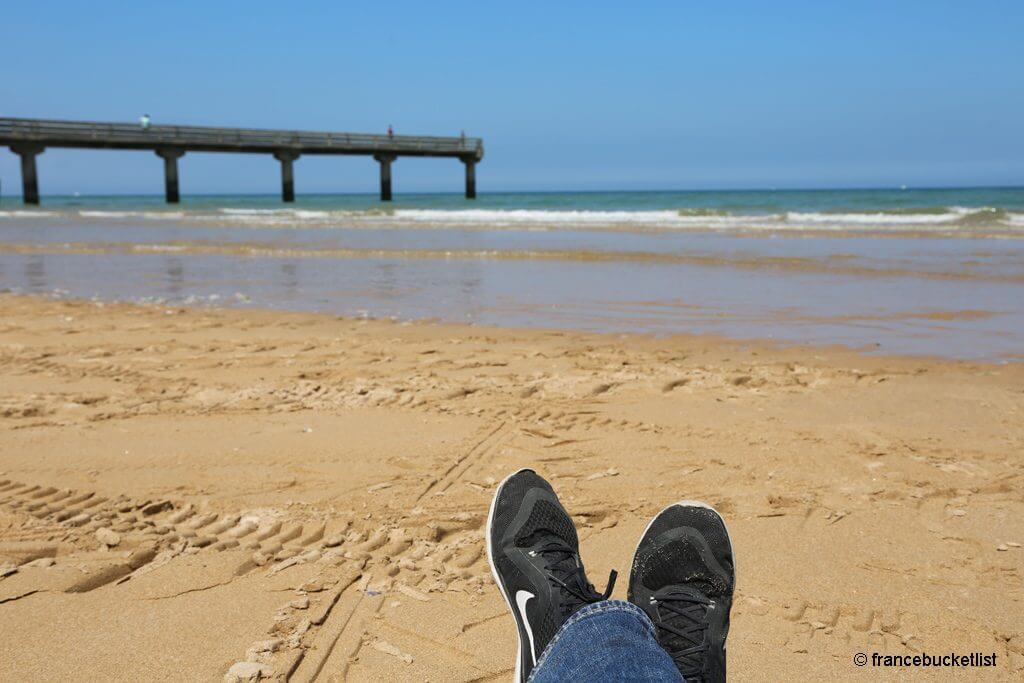
After Juno Beach, head west along the D514 to Arromanches-les-Bains to visit Gold Beach – which the British attacked on D-Day – and the Musée du Débarquement.
The Musée du Débarquement details how the artificial Mulberry Harbors (temporary ports for the offloading of cargo crucial to the invasion) were engineered. Dioramas, models, and two films explain the logistics and importance of the artificial harbor of Port Winston in Gold Beach.
A good alternative to the Musée du Débarquement is Arromanches 360 Circular Cinema, a nine-screen cinema covering a 360º field of vision. Inside, visitors can watch a film about the Battle of Normandy. The cinema is located on the Arromanches clifftops not far from the Liberators Museum – Normandy 1944 – Click here to buy your tickets now
Omaha Beach
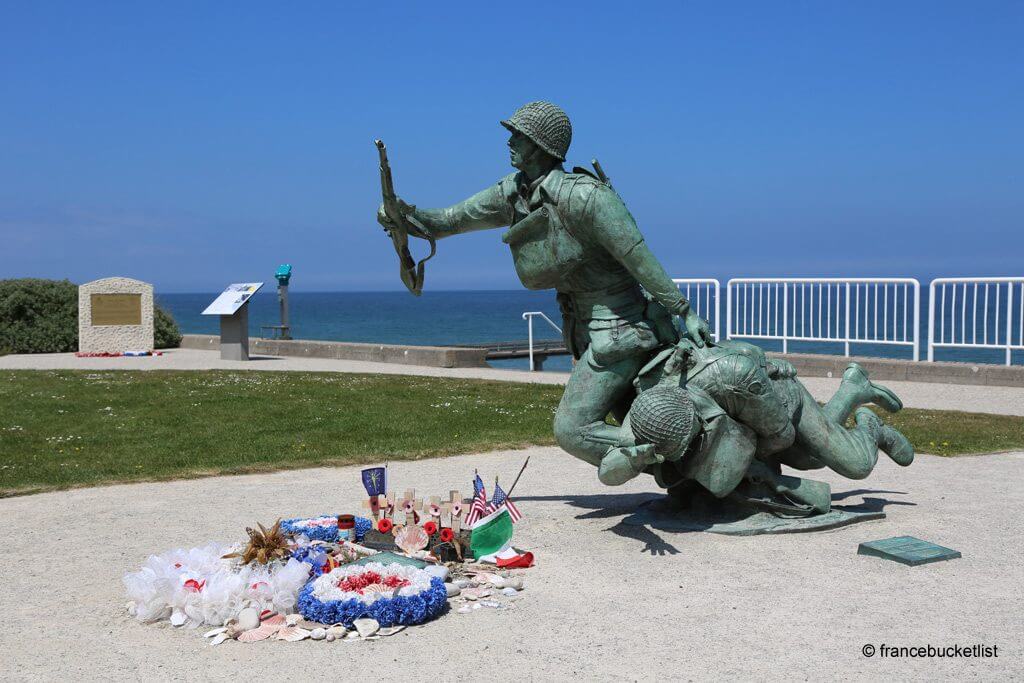
Omaha Beach is one of the Normandy Landing Beaches stormed by the American troops and the one where the soldiers suffered the worst losses on D-Day.
Before the landings, the bombardments proved ineffective in wiping out many German positions dotted along the slopes above the beaches beyond Colleville-sur-Mer, Saint-Laurent-sur-Mer, and Vierville-sur-Mer. Some 1,800 GIs died in the waves or on the sand mown down by German bullets and shells – hence the beach’s nickname Bloody Omaha.
Almost 2,300 more soldiers had been more or less seriously wounded and were evacuated by an unceasing shuttle of landing craft between the beach and the ships offshore, where they were given initial treatment before being transferred to hospitals in Britain.
Despite heavy losses, small groups of Americans made it up the slopes and took German positions from behind, so some gains were made, if at a high human cost.
Omaha Beach is a long beach with many memorials along the shore. The memorial Les Braves is located in Omaha Beach, while the Wounded Soldier Memorial (pictured above) is located at Sector Charlie.
Pointe du Hoc
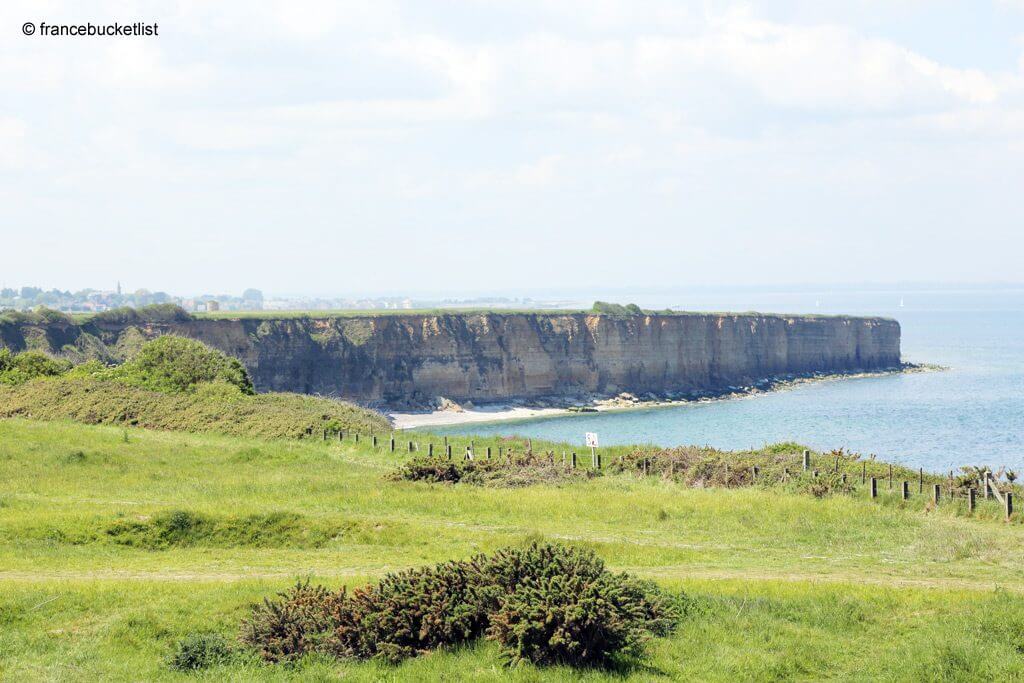
La Pointe du Hoc is the highest point between Omaha Beach to the east and Utah Beach to the west. La Pointe du Hoc was one of the key German fortified sites along the Normandy coast and was equipped with extensive heavy artillery at that time, which is why it was considered the most dangerous mission of the D-Day Landings.
La Pointe du Hoc was the scene of a daring assault in the early hours of 6 June 1944. On that day, 225 US Army Rangers scaled the perilously steep 30m-high cliffs with the help of cords, ladders, and grappling irons to capture the site. Once they reached the top, the soldiers discovered the guns had been moved inland, so they set off to find and disable them while successfully enduring enemy counterattacks.
By the time the force was relieved on 8 June, only around 90 men had survived.
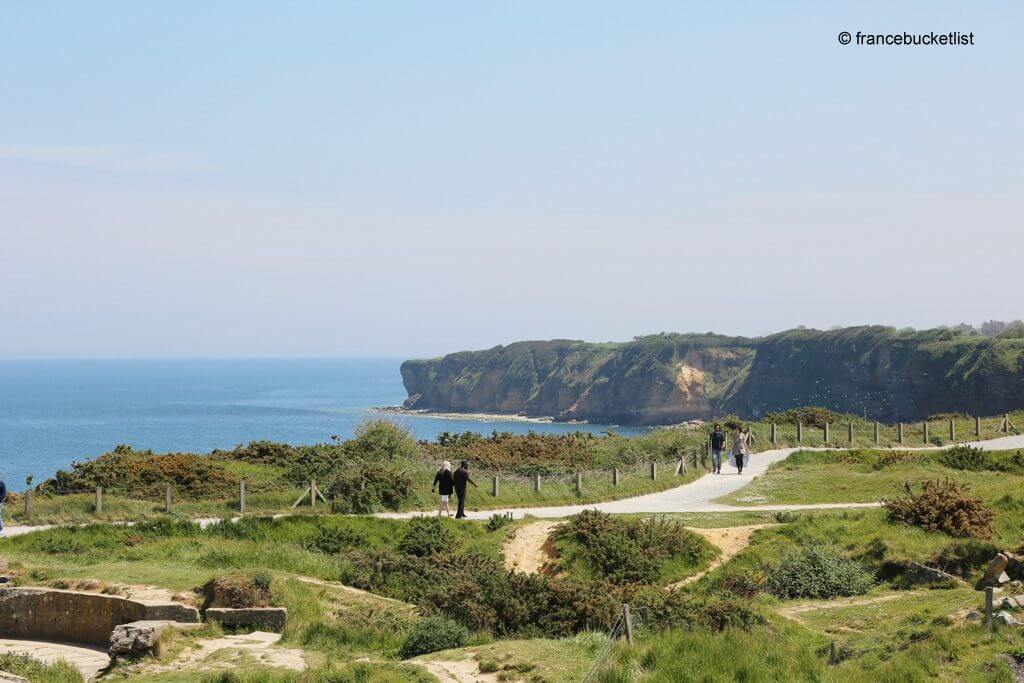
Today, La Pointe du Hoc is a lovely place, even if the landscape remains scarred by the events of 1944. The hills and valleys in the picture above are holes and craters made by the bombs’ explosions. Amongst this particular landscape, visitors can still see the ruins of some German bunkers.
The First American War Cemetery Memorial in France
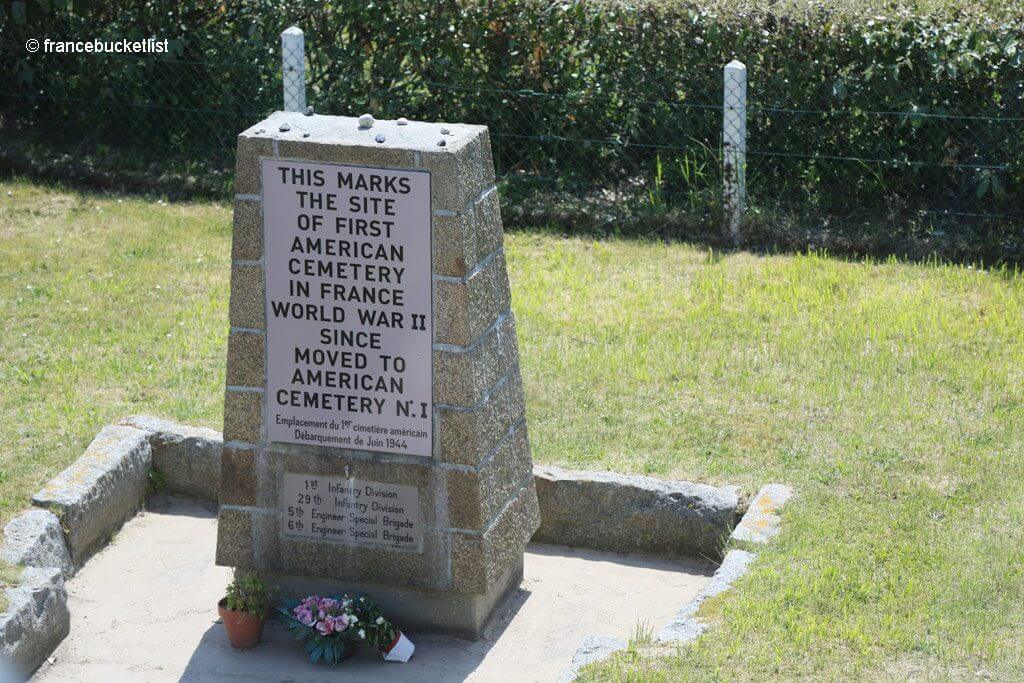
On the way back to Colleville-sur-Mer to visit the Normandy American Cemetery, take a short stop at Vierville-sur-Mer to see the Memorial of the First American War Cemetery in France.
The text on the stone memorial reads: “This marks the site of first American Cemetery in France World War II since moved to American Cemetery N:1
1st Infantry Division, 29th Infantry Division, 5th Engineer Special Brigade, 6th Engineer Special Brigade”
Normandy American War Cemetery and Memorial
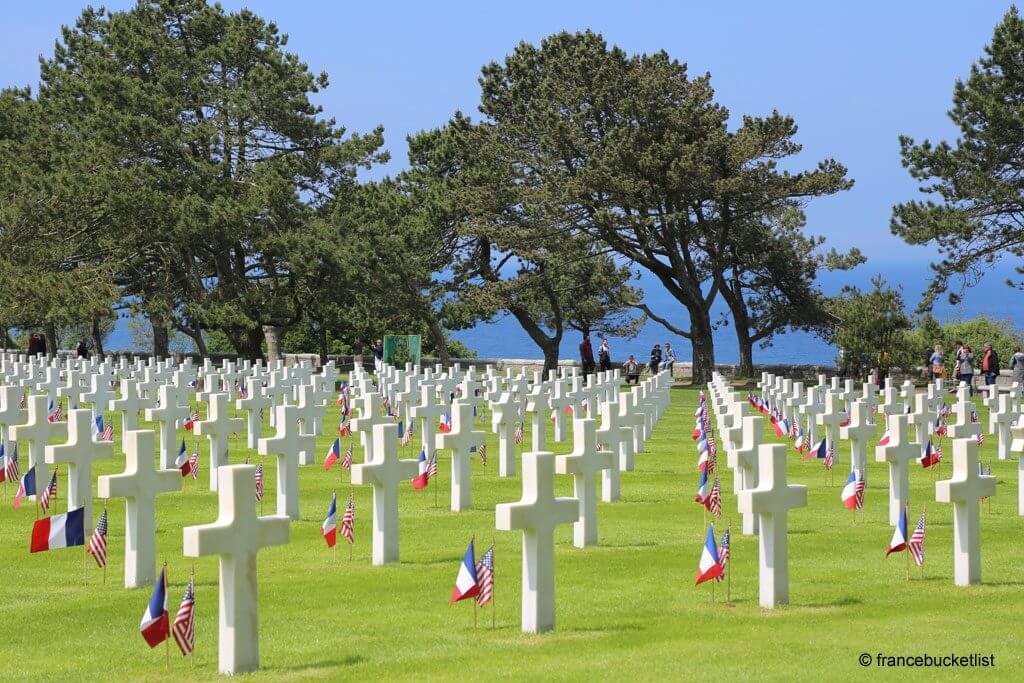
The World War II Normandy American Cemetery and Memorial is one of the most moving WW2 sites in France. It is situated on a cliff overlooking Omaha Beach and the English Channel in Colleville-sur-Mer, Normandy. Here, we are on American soil because the French Government granted this land to the United States of America forever.
The cemetery contains the graves of 9,387 American military dead, most of whom gave their lives during the landings and ensuing operations of World War 2, and it is the most visited cemetery managed by the American Battle Monuments Commission (ABMC).
On the walls of the semicircular garden on the east side of the memorial are inscribed the names of 1,557 Missing Americans who gave their lives in their country’s service but whose remains were not located or identified.
The memorial consists of a semicircular colonnade with a loggia at each end containing maps and narratives of the military operations. At the center is a bronze statue titled “Spirit of American Youth.” An orientation table overlooks the beach and depicts the landings at Normandy.
Day two of this road trip to the Normandy D-day sites ends at Bayeux, where you will spend one night. For your night in Bayeux, we recommend Clos de Bellefontaine B&B, a beautiful 19th-century private mansion set in a beautiful 2,000m2 park, with private parking on-site. Clos de Bellefontaine is located 200m from the Bayeux Tapestry – Click here to book your stay at Clos de Bellefontaine B&B
Day 3 | Bayeux – Other Normandy WW2 Sites
Morning in Bayeux
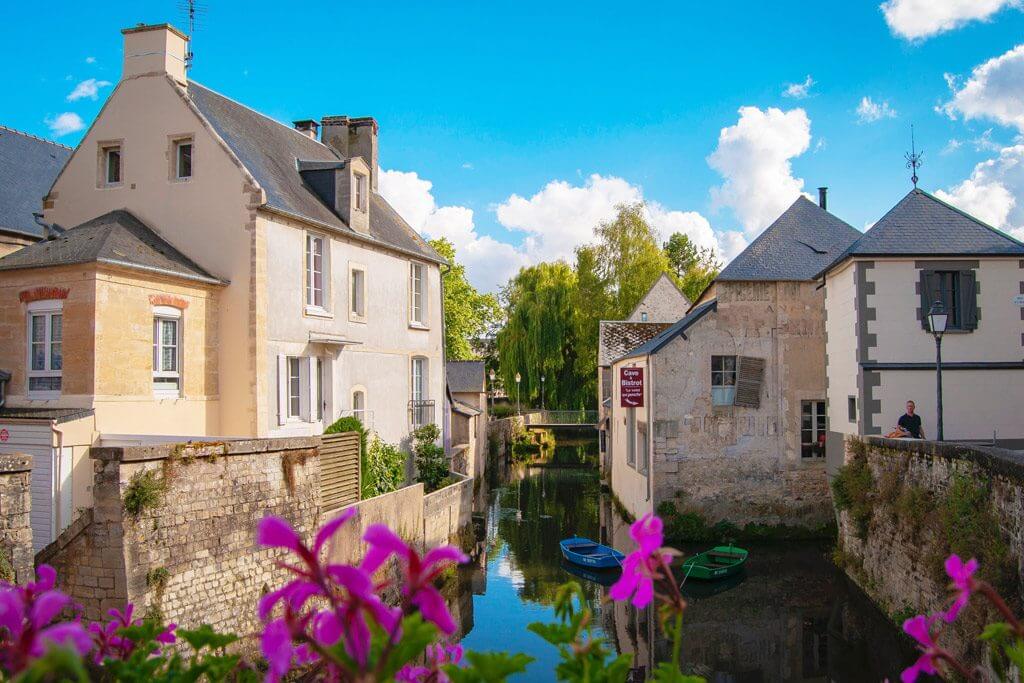
Day 3 of this road trip explores Bayeux and other Normandy WW2 sites. Bayeux was the first city to be liberated in mainland France. The city was very fortunate to avoid most of the destruction and tragedy that other towns in Normandy suffered following D-Day.
For a very brief moment, Bayeux was the capital of Free France, and General Charles de Gaulle came to give a stirring speech here on 14 June 1944. Bayeux’s War Museum and the British Cemetery commemorate the sacrifices made in these parts.
Other interesting attractions in Bayeux include:
- Bayeux Cathedral, which was consecrated in the presence of William the Conqueror
- The Bayeux Tapestry
The Bayeux Tapestry, a 70-meter-long and 50-centimeter-high embroidery, is an invaluable record of William the Conqueror’s conquest of England’s throne in the 11th century. It is listed in UNESCO’s Memory of the World Register. The incredible Bayeux Tapestry depicts the clothes, castles, ships, and living conditions of the 11th century.
Afternoon at German War Cemetery at La Cambe
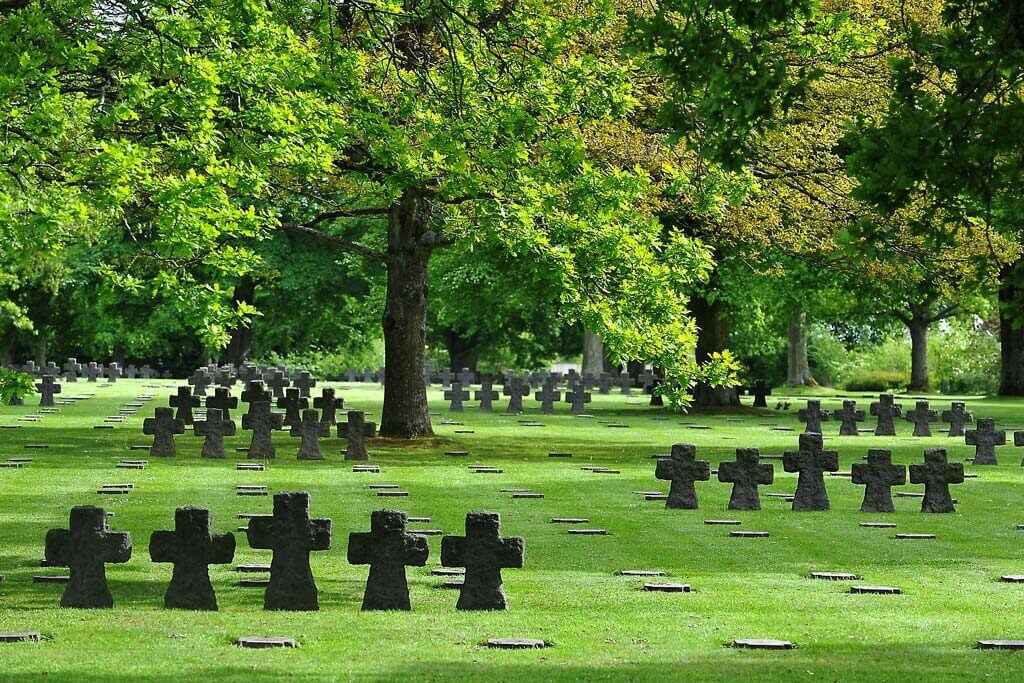
On the way to Sainte Mère Église from Bayeux (N13), take a short stop at La Cambe to visit the German War Cemetery. The Kriegsgräberstätte has 21,160 graves. The hill in the middle of the cemetery is a mass grave with 296 casualties.
La Cambe was originally the site of a battlefield cemetery created on 10 June 1944 during the Battle of Normandy. American and German soldiers, sailors, and airmen were buried in two adjacent fields.
Following the end of the war in Europe in May 1945, the American Battle Monuments Commission began exhuming the remains of American service members and transferring them to their final resting place in accordance with the wishes of their families. Two-thirds of the fallen soldiers were transferred from this site back to the United States, while the remainder were re-interred at the new American Cemetery and Memorial at Colleville-sur-Mer, overlooking the Omaha Beach landing site.
The sign in front of the cemetery reads: ‘The German Cemetery at La Cambe: In the Same Soil of France.
Until 1947, this was an American cemetery. The remains were exhumed and shipped to the United States. It has been German since 1948 and contains over 21,000 graves. With its melancholy rigor, it is a graveyard for soldiers, not all of whom had chosen either the cause or the fight. They too have found rest in our soil of France.’
Afternoon at Sainte-Mère Église
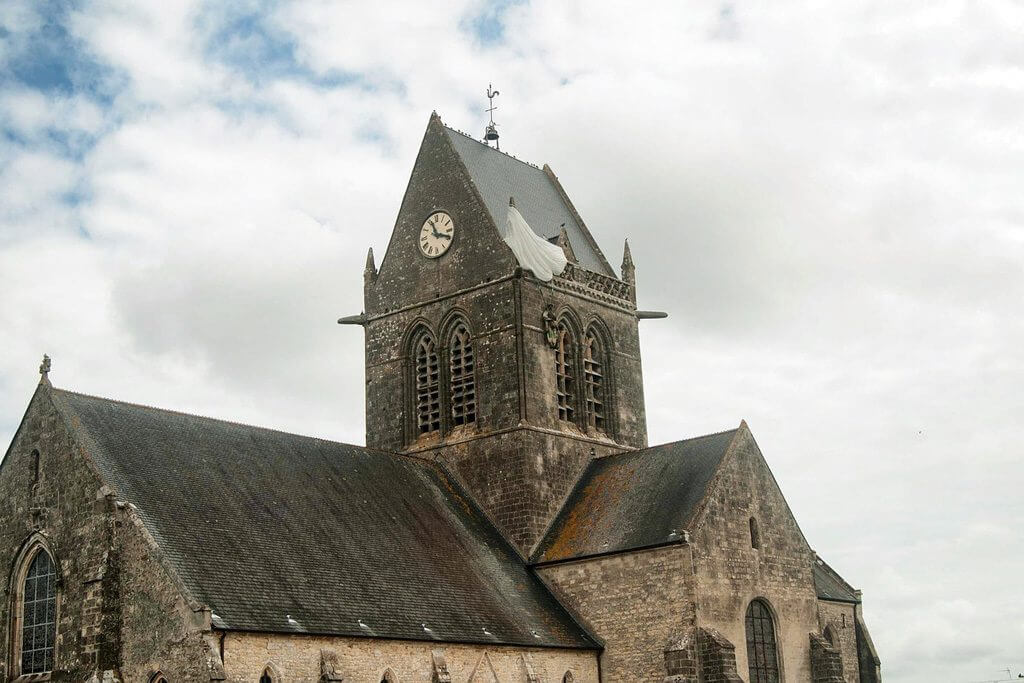
The last stop of this road trip WW2 sites, France, is the town of Sainte Mère Église, which gained a place in history on D-Day as one of the first towns to be liberated. This was achieved through the efforts of American paratroopers who were dropped into Sainte-Mère-Église on the night of 5 June 1944.
One of the paratroopers, an American named John Steele, got his parachute caught on the church steeple and remained suspended for several hours until he was cut down and taken prisoner by German troops. Days later, he managed to escape from the Germans, and he returned to his regiment and survived the war.
To commemorate this event and the liberation of the town, a paratrooper effigy remains hanging from its white parachute near the windows of the bell tower (see picture above).
In Sainte-Mère Église, don’t miss the Airborne Museum dedicated to the memory of paratroopers of the 82nd and 101st Airborne Divisions of the United States Army who parachuted into Normandy on the night of June 5–6, 1944.
This Normandy WW2 Sites road trip ends here. If you have some extra days in France, you can consider this Brittany road trip, which covers pretty medieval villages, natural sites, and world wonders.
D-Day Landing Sites – Historical Background
The Normandy Landing operation was the largest seaborne invasion in history. The invasion took place on Normandy’s beaches on Tuesday, 6 June 1944, by the Allies. The operation, known as D-Day, was the beginning of the liberation of German-occupied France (and later Europe) from Nazi control and laid the Allied victory foundations on the Western Front.
The US, Canadian, and British governments began planning the Normandy invasion in 1943. The French resistance also played an essential role in this operation. The main constraints on its success were the weather, the tides, and logistics (shipping soldiers, machines, and guns from the US and Canada to the UK).
On the other side, the Germans were expecting an invasion from the sea, and of course, they were prepared. Adolf Hitler placed German Field Marshal Erwin Rommel in command of German forces. He was also in charge of developing fortifications along the Atlantic Wall in anticipation of an Allied invasion.
The first twenty-four hours of the invasion will be decisive. . . . [T]he fate of Germany depends on the outcome. For the Allies as well as Germany, it will be the longest day — Field Marshal Erwin Rommel, 22 April 1944
Your task will not be an easy one. Your enemy is well-trained, well-equipped, and battle-hardened. He will fight savagely. But this is the year 1944! The tide has turned! The freemen of the world are marching together to victory! I have full confidence in your courage, devotion to duty, and skill in battle.
We will accept nothing less than full victory! Good luck! And let us all beseech the blessing of Almighty God upon this great and noble undertaking. — Gen. Dwight D. Eisenhower, Supreme Allied Commander, 6 June 1944
We have a sufficiency of troops; we have all the necessary tackle; we have an excellent plan. This is a perfectly normal operation which is certain of success. If anyone has any doubts in his mind, let him stay behind. — Gen. Bernard L. Montgomery, commanding Twenty-first Army Group.
The supreme battle is underway. It is, of course, the Battle of France and the Battle for France. For the sons of France, wherever they are, and whoever they are, the simple and sacred duty is to fight the enemy by all means at their disposal. — Gen. Charles de Gaulle, 6 June 1944
After many losses from both sides, the Normandy landing sites were all taken, and the Allied Forces connected on 12 June. Casualties were very high, and towns and cities were heavily destroyed. This was the price to pay in Normandy for our freedom.
Museums, memorials, war cemeteries, and other WW2 sites in France offer visitors a glimpse of this terrible chapter in our history. There’s a huge amount of documentation and collection of memories here, so we don’t forget.
So, what are you waiting for? Book this road trip to the D-Day Landing Sites today!
Click here for other Road Trips
Pin it now and read it later




